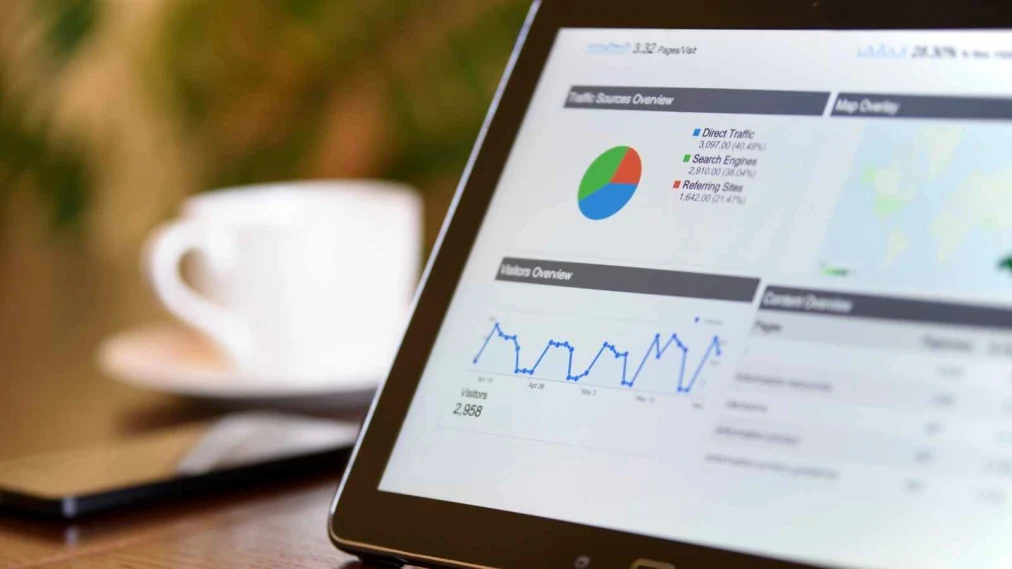By Michael Patten
Google Analytics has been a staple in every marketer’s toolbox for yonks now, but way back in 2020, Google announced a big change. The Google Analytics we know and love (Now referred to as ‘Universal Analytics’, or technically ‘GA3’) is no longer being updated and ‘GA4’ was to be the new default analytics.
What is GA4?
GA4 has been out and available to use for over a year now, but in its early days it had limited functionality, which Google has iterated on gradually. Typically every time you’d log in, something would have been added, moved or renamed.
Installing the basic, out-of-the-box tracking is pretty straightforward, but it can be altogether a different story to tailor the tracking to the more bespoke features of your website. This is all down to how everything is tracked by the platform behind-the-scenes.
If GA4’s been out for ages, why is it noteworthy now?
Well, there’s been a bit of a shift. Previously, what most people were doing was using Universal Analytics (GA of olde) as the main source of reporting, whilst using GA4 as a comparison tool. Or, if you’re already ahead of the curve, using it to create more advanced audience lists for remarketing with via Google Ads
Now Google is sending the message to prepare for the shift – soon GA4 will be the default platform, with UA taking the role of a historical record of previous data for past-comparisons.
What should my business be doing now?
Now is the time to get your GA4 functioning at the same level as your UA setup, including the tracking of:
- Custom events
- Custom Dimensions & Metrics
- Cross-domain tracking (if required)
- Filtering-out of internal traffic
You can even get started with enhancing some of GA4’s built-in features, such as scroll depth tracking, which out-of-the-box will only track when a user makes it 90% down the page. Configure it to percentages of your choosing instead!
How to get GA4 set up and working for you
1: Map out your current setup
Buckle up, because it’s spreadsheet time! You need a single point of truth to be able to do this properly. What does each aspect track, and where? What does each aspect feed into?
Largely this will be mapping the existing events being tracked and noting what they capture at the category, action and label level. It’s also important to look into how each of these is tracking information – are there any dynamic variables being used? If so, looking into the setup in Google Tag Manager (or the website hardcode for non-GTM setups) is a good idea to make sure the functionality is preserved in your new GA4 build.
You’ll also need to note Custom Dimensions and metrics, along with the scope they are set to, as this works slightly differently in GA4 and you’ll need to do some ‘translating’.
Finally, look at any goals you’ve set up, as anything valuable to the business can be set as a conversion event within GA4.
2: Learn the differences between Universal Analytics and GA4
In particular, you’ll want to focus on the differences in event tracking.
In UA, events were custom-set and featured an Event Category, Event Action and (usually) an Event Label, sometimes an Event Value.
Whereas in GA4, technically everything is an event. A page view is now an event, whereas before it was just a ‘page view’. A purchase is an event, whereas before it was a ‘transaction’.
What’s more, the three-tiered structure of Category, Action and Label no longer exists. It’s simply the event name and its associated parameters – of which there could be none, a few, or many. This can feel pretty confusing after years of being restricted in what events can capture, but once you get your head round it, it presents tons of opportunities for capturing multiple aspects of an interaction in one go.
3. Familiarise yourself with the reporting differences between the Universal Analytics and GA4
There’s a few here. The biggest shock for most will be that Bounce Rate no longer exists, due to the complexity of how things can be tracked. Now, you’ll be focusing on Engaged vs non-engaged users.
Reporting time is also a big change. Universal Analytics would typically populate with new interactions every 20 minutes to 2 hours, while GA4 takes a whole 24-hour period to populate data.
4. Start migrating!
Once you’re feeling comfortable that you know your current analytics set up inside out (including Events, Custom Dimensions, Conversions and so on), know which metrics you’re planning on bringing with you, and have had a play in the GA4 interface, it’s time to get cracking.
This is no lift-and-shift migration and it’s not going to happen overnight. You’re likely to encounter a learning curve, so give yourself time – or enlist outside help from a specialist to help manage the process alongside you.
Does that all sound a bit much?
As you’ve probably gathered, it’s a pretty significant update. Soon GA4 will be the default platform, so marketers need to be getting pretty comfortable with it now.
If you need a hand, we can help you get off on the right foot – get in touch today.



